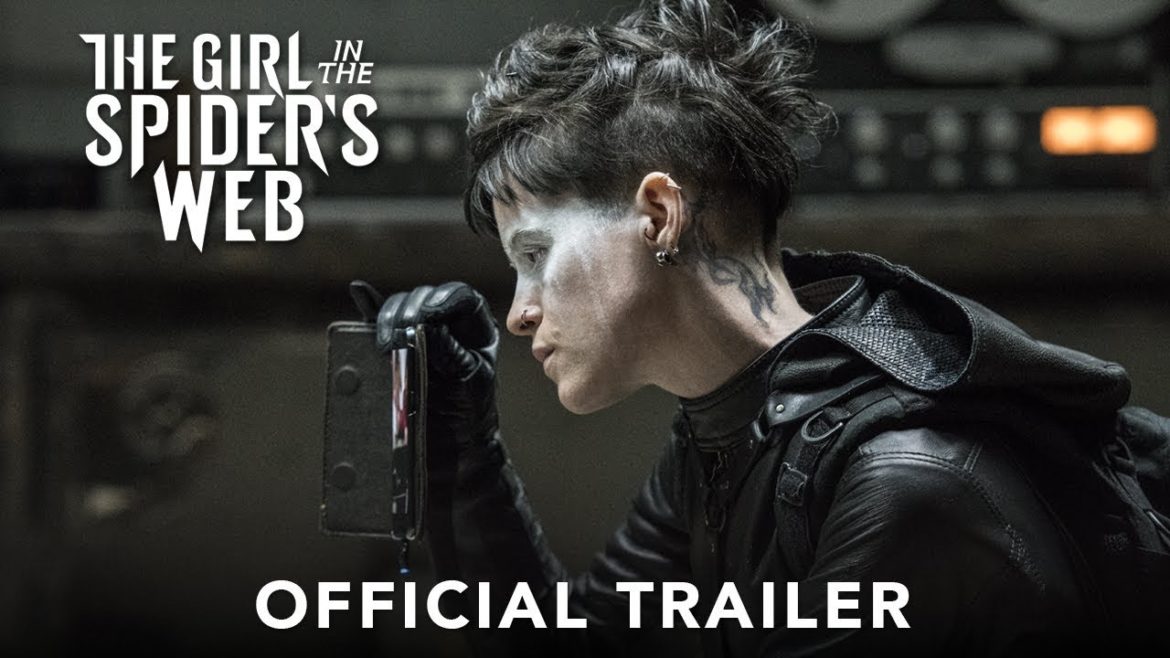TL;DR
Stieg Larsson's iconic hacker, Lisbeth Salander, returns in *The Girl in the Spider's Web*, a continuation of the saga after previous adaptations. This time, Claire Foy steps into the role, tasked with retrieving a dangerous cyberweapon that could control global missile systems. The film boasts stylish action, impressive visuals of Stockholm, and a standout performance from Foy, who truly embodies Lisbeth's fierce intelligence and capability. However, the movie struggles with inconsistent accents, occasional plot contrivances, and pacing issues, preventing it from reaching its full emotional potential. Despite its flaws, the film sets the stage for more Salander adventures. Discover if Foy’s portrayal is the definitive Lisbeth in our full review!
The story of the author Stieg Larsson is a poignant one. He tragically passed away from a heart attack in 2004, just before witnessing the immense success of his books featuring the hacker Lisbeth Salander. The first book was published posthumously the following year and became an immediate phenomenon. In 2009, the initial film adaptation, starring Noomi Rapace, was released to great acclaim. Then, in 2011, David Fincher directed an American remake with Rooney Mara in the leading role, which, while well-received, did not achieve the same level of success. Plans to adapt all three books with Mara and Daniel Craig were ultimately shelved. After a seven-year hiatus, a trailer emerged for a new Lisbeth Salander film, this time based on the fourth book, Det som inte dödar oss (The Girl in the Spider’s Web), which Stieg Larsson began but did not complete. The novel was finished by David Lagercrantz (brother of actress Marika Lagercrantz). The film retains its English title even in Sweden, marking another chapter in Lisbeth’s saga.
Frans Balder (Stephen Merchant) has developed a potentially catastrophic program known as Firefell. This program, if misused, could grant control of the world’s missile systems from a single laptop. Recognizing the inherent danger, Balder enlists Lisbeth Salander (Claire Foy) to infiltrate the NSA’s mainframes and extract the program. While this task appears straightforward for the brilliant Salander, she is ambushed after obtaining the program and narrowly escapes. This event triggers a tense and complex cat-and-mouse game where trust becomes a liability.
The film’s quality is uneven. At its best, it delivers stylish action sequences, impressive set design, and a visually compelling, albeit stylized, depiction of Stockholm. Claire Foy’s portrayal of Salander shines, particularly in scenes involving her motorcycle, sharp dialogue, ingenious problem-solving, and overall performance. Conversely, the film suffers from inconsistent and unconvincing Swedish accents, reminiscent of the issues present in Fincher’s 2011 adaptation. The accents often veer into vaguely Eastern European territories, lacking authenticity. Furthermore, Lisbeth’s characterization occasionally lapses into illogical behavior, such as a questionable decision involving a mobile phone, which detracts from her otherwise exceptional intellect and strategic prowess. Further details would constitute a spoiler.
The film’s pacing also presents challenges, occasionally feeling protracted and sluggish. A significant drawback of The Girl in the Spider’s Web is its failure to fully capitalize on its potential for emotional resonance. Despite possessing the necessary elements for a compelling narrative, the film largely fails to evoke strong emotions in the audience.
Claire Foy is the third actress to portray Lisbeth Salander, and arguably delivers the most compelling interpretation of the character. She effectively balances Lisbeth’s introverted nature with her capacity for explosive violence. Her portrayal of Lisbeth’s combat skills is believable, conveying an aura of formidable competence.
Sverrir Gudnason’s depiction of Mikeal Blomkvist feels somewhat miscast. As one viewer noted, he appears too young for the role. Traditionally, Lisbeth and Mikael are contemporaries, a dynamic that is not effectively conveyed in this film. Moreover, Blomkvist’s role is significantly reduced, functioning more as a supporting character in Lisbeth’s narrative.
Sylvia Hoeks portrays a character whose identity is best discovered while viewing the film. Her performance is competent, although it somewhat mirrors villainous roles she has played previously.
Claes Bang (known for his role in Östlund’s The Square) plays a henchman associated with the film’s titular Spiders. He delivers a genuinely menacing and captivating performance as a villain.
Mikael Persbrandt also deserves mention for his brief but pivotal role. His character’s menacing presence permeates the film, demonstrating a significant impact despite limited screen time.
Director Fede Alvarez, known for directing the Evil Dead remake, employs a distinctive visual style, which, at times, borders on excessive. The film prioritizes spectacle over realism, succumbing to typical Hollywood conventions.
The filmmakers’ disregard for accurately depicting Stockholm is evident, from the presence of unlikely elevators on Kungsgatan’s skyscrapers (which, while visually appealing, are largely fictional) to the exaggerated portrayal of Birger Jarlsgatan. Visual aesthetics take precedence, exemplified by scenes of Lisbeth riding her motorcycle through the capital accompanied by dramatic musical cues.
Given the rejuvenation of Mikael Blomkvist and the younger cast at the newspaper, along with the decision to begin with the fourth book, disregarding the second and third, it is plausible that the rights to the characters have been sold. If this film proves successful, it is likely that we will see further adaptations of Lisbeth Salander’s adventures. This prospect is not unwelcome, as Lisbeth Salander has become a significant cultural icon for Sweden.
In conclusion, The Girl in The Spider’s Web offers an engaging cinematic experience, but its imperfections prevent it from achieving essential viewing status. Nevertheless, it warrants a recommendation.

